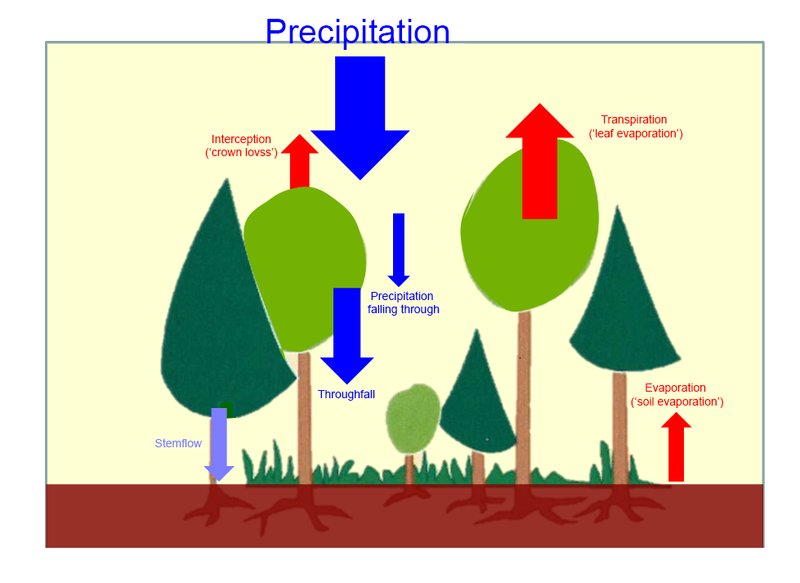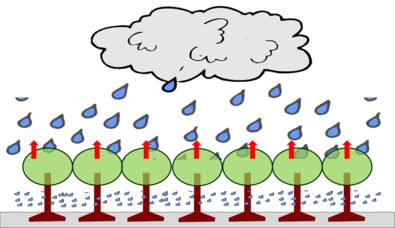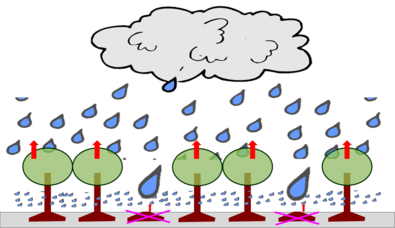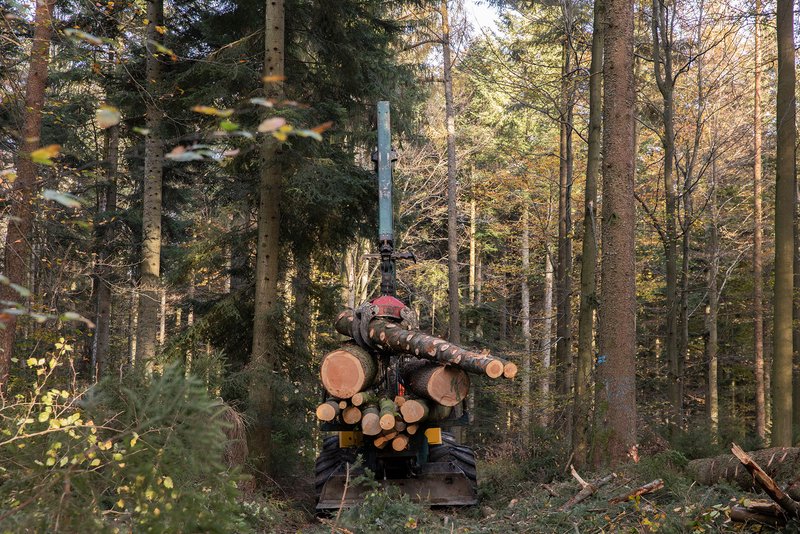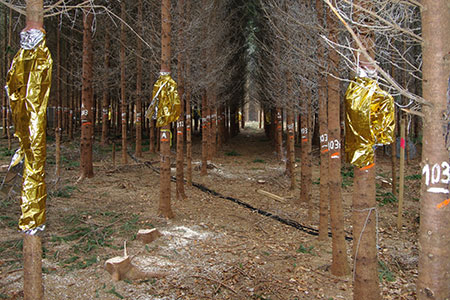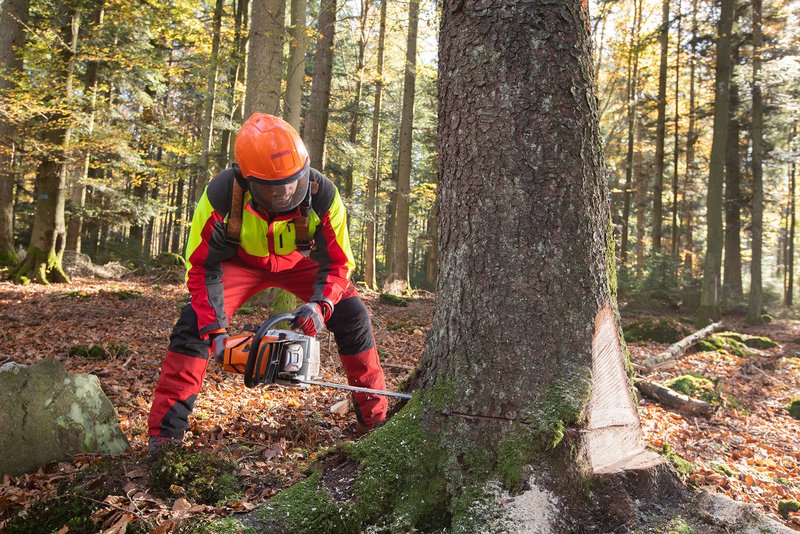
Figure 1: Is the active thinning of forests helpful in climate change – or perhaps rather a risk? (Photo: Ulrike Klumpp)
In the meantime, it’s all over town: this is how even looking back makes it hauntingly clear that climate has also changed constantly in the past. There is also a broad consensus that the current measurable change will continue in the future. Certainly, there are uncertainties about the speed and magnitude of the expected changes, as well as differences in threat assessment. However, few question the fact of ongoing change and further warming in principle. And if the climate changes (strongly enough), then the forest changes too - whether we like it or not!
In dealing with these change and/or adaptation processes, the two following aspects are under discussion in the forestry sector. One the one hand, there is the question which tree species have sufficient adaptability to play a role in the forests and climates of tomorrow. On the other hand, it is discussed to what extent existing forests may be sustained and stabilised in the context of climate change through specific tending measures – or whether unmanaged forests left to their own devices might better cope with the adaptation process.
The latter question can also be put as: Is active thinning actually helpful in climate change – or perhaps rather a risk?
In order to answer this, the following must be taken into account:
Crop density/soil moisture
As long as no additional damage occurs, restraint or abandonment of thinning leads to dense stands with relatively closed canopies. Depending on the tree species, this is associated with a comparatively cool and moist climate in the interior of the stand. Thinning reduces the degree of canopy closure. This results in (slightly) elevated temperatures and (slightly) reduced humidity within the stand. Superficially, this might suggest that this would have an adverse effect on soil moisture, which would be equivalent to a degradation of the trees’ water supply. If this were true, then thinning during climate change would actually be rather unfavourable for the trees. Would! Because the crux of the matter is whether this superficial assessment is actually true?
The answer: not really! This becomes clear when reviewing the rather extensive literature on investigations that deal specifically with relations between drought, thinning and (growth) stability. The results of the various studies naturally vary in detail. On the whole, however, there is a consistent trend. Not unexpectedly, drought years lead in principle to declining growth, both in unthinned stand and in thinned ones. However, there are clear gradual differences. While drought in unthinned stands also has a marked effect on the growth of trees in subsequent years, growth in well-thinned stands develops in subsequent years relatively more stable.
One of the most important reasons for this is probably the improved water supply for the trees. Actually, the superficial assessment proves deceptive. Despite (somewhat) warmer interior climate, thinning has a positive effect on soil moisture. Why is that so? The three following aspects in particular are relevant for this purpose:
Less loss through interception
During rainfall, part of the precipitation is retained in the canopy and evaporates without reaching the ground at all (Fig. 2). This interception can ‘disappear’ up to 30% of the precipitation in conifers, and up to 20% in deciduous tree species. In canopy gaps created by the thinning, interception is eliminated and thus slightly more of the precipitation reaches the soil.
Reduced evapotranspiration
The water stored in the soil evaporates (transpiration) from the plants’ leaves/needles after being sucked up the roots. Furthermore, water can also evaporate directly from the soil surface (evaporation). Given identical radiation, the magnitude of evaporation per unit area of canopy surface (transpiration) exceeds that of the bare soil (evaporation) by a factor of about ten. Thus, if after thinning solar radiation reaches through gaps directly down to the ground, evaporation from the ground increases, but at the same time the transpiration losses from leaves/needles decrease due to the reduced canopy surface. This means that the total evapotranspiration does not necessarily increase, but may even – at least in a tendency – decrease to some degree.
Reduced root competition
By removing competing neighbouring trees, the vacant root space becomes available to the remaining trees for additional water and nutrient resources.
To note: all three effects triggered by thinning tend to improve the remaining trees’ water supply (Fig. 3). Under climate change, this is anything but not important. Despite these improvements triggered by thinning, there are, however, no miracles. It certainly will not be possible to evolve drought resistance in tree species at sites where they are already overstretched with respect to climatic conditions. In addition, the positive effects do not last for long, but disappear with increasing growth: The canopy closes again and the vacant root space becomes occupied.
Thinning and water supply
In summary: Contrary to occasional superficially derived assumptions, adequate thinnings do not in any way have a harmful effect on the water supply of the trees. On the contrary, there are tendencies for improvement. However, the positive effects on water supply are neither of earth-shattering magnitude nor lasting. But they work in the right direction and can be repeated by renewed thinning after the effect of the thinning has subsided. Therefore, consistent thinning – especially under climate change conditions – is an important contribution to the stabilisation of forests.
Furthermore, besides improving the water supply for trees, thinning also impacts on other effects that can be of great importance for the stabilisation of stands under climate change conditions:
- Securing admixtures of tree species that display under the current conditions inferior competition but, however, have under ongoing climate change good prospects in the farer future (e.g. preservation of oak admixtures in highly competitive beech stands).
- By promoting diameter growth, target diameters are achieved earlier. This means that the stands reach maturity earlier. Which is favourable as younger tree populations are expected to display better adaptation potential to environmental changes than older trees.
If the desired target diameter is reached earlier, the trees are also lower. In connection with managing storm damage risks, this is a very decisive factor! Tree height is one of the most decisive factors for the risk of storm damage. As tree height increases, the wind load and thus storm risk increase rapidly and sharply as well (Fig. 4).
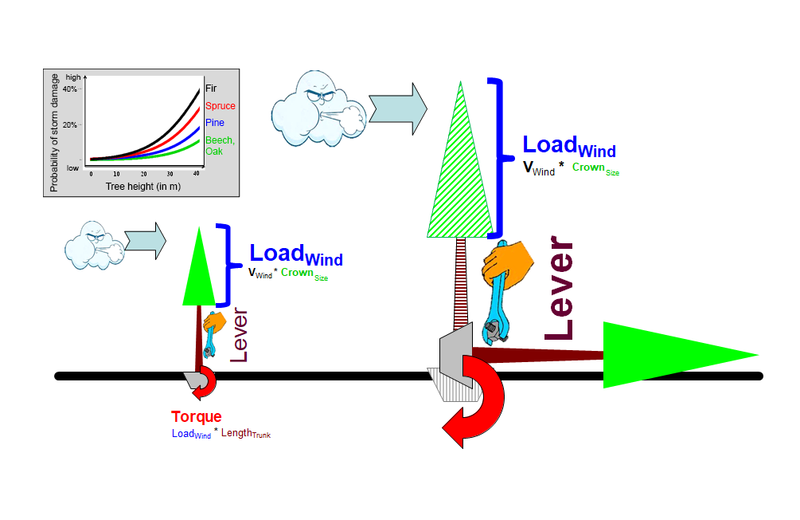
Figure 4: Relationship between tree height and storm damage risk.
Left: low tree – low wind load (lower wind speed, smaller crown) with short lever (short stem) lead to low strain on the roots = low risk. Right: tall tree – large wind load (higher wind speed, larger crown) with long lever (long trunk) lead to much higher strain on the roots = very high risk.
Thinning is therefore extremely important for the stabilisation of existing stands under climate change conditions. To forgo thinning would be completely wrong. So, we need to roll up our sleeves when it comes to thinning during times of climate change. Of course, in a reasonable, appropriate and state-of-the-art manner. The following rule must be observed: While strong thinning is not a problem in young, growth-dynamic stands, the foot must gradually be taken off the accelerator with increasing age. In any case, ‘brutal thinnings’ in high, old stands are malpractice and do not belong in the toolbox of state-of-the art thinnings!

